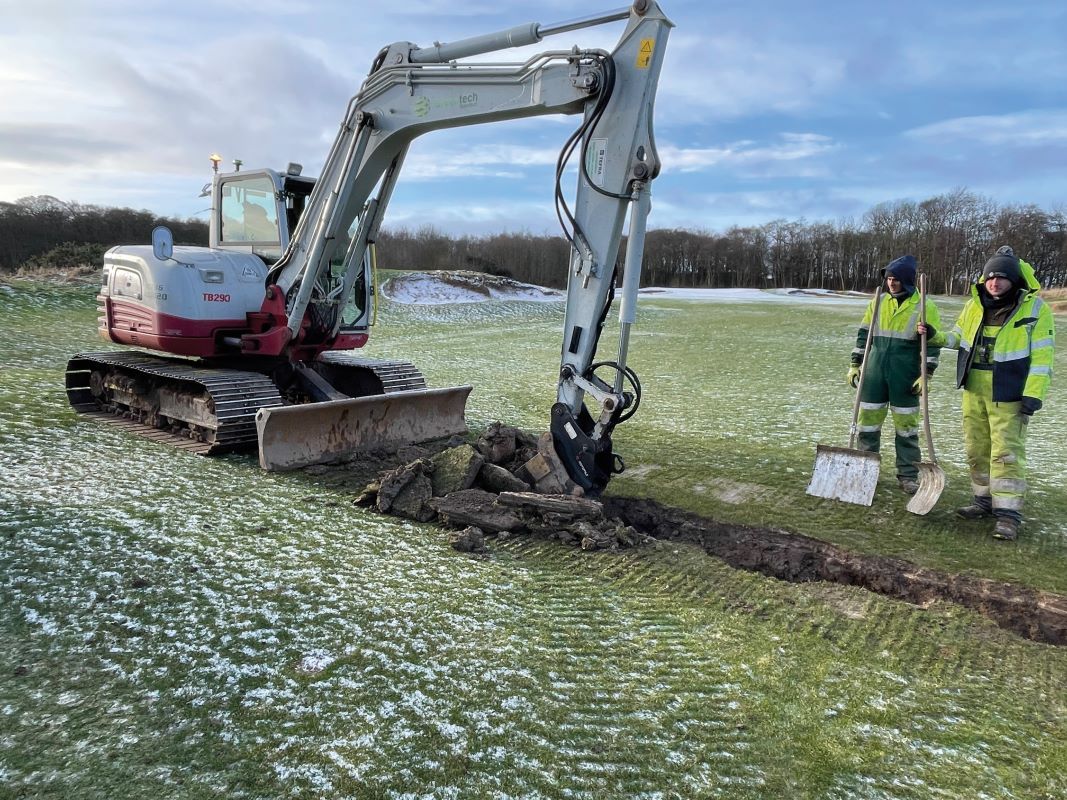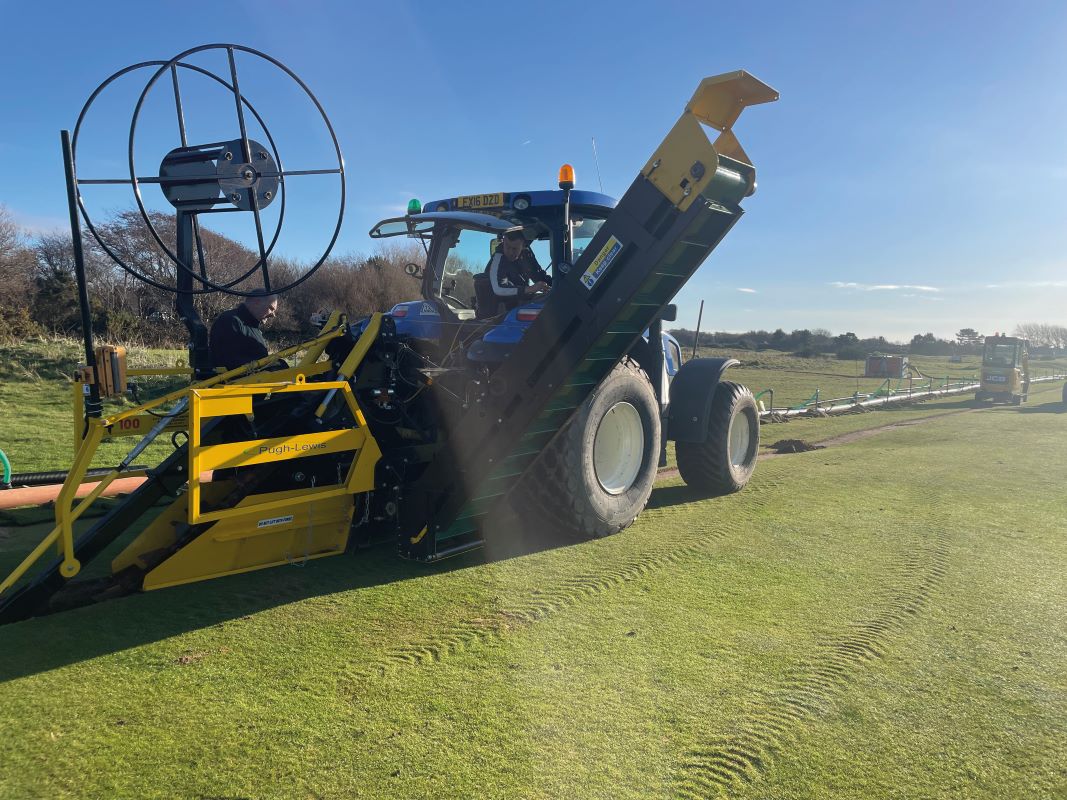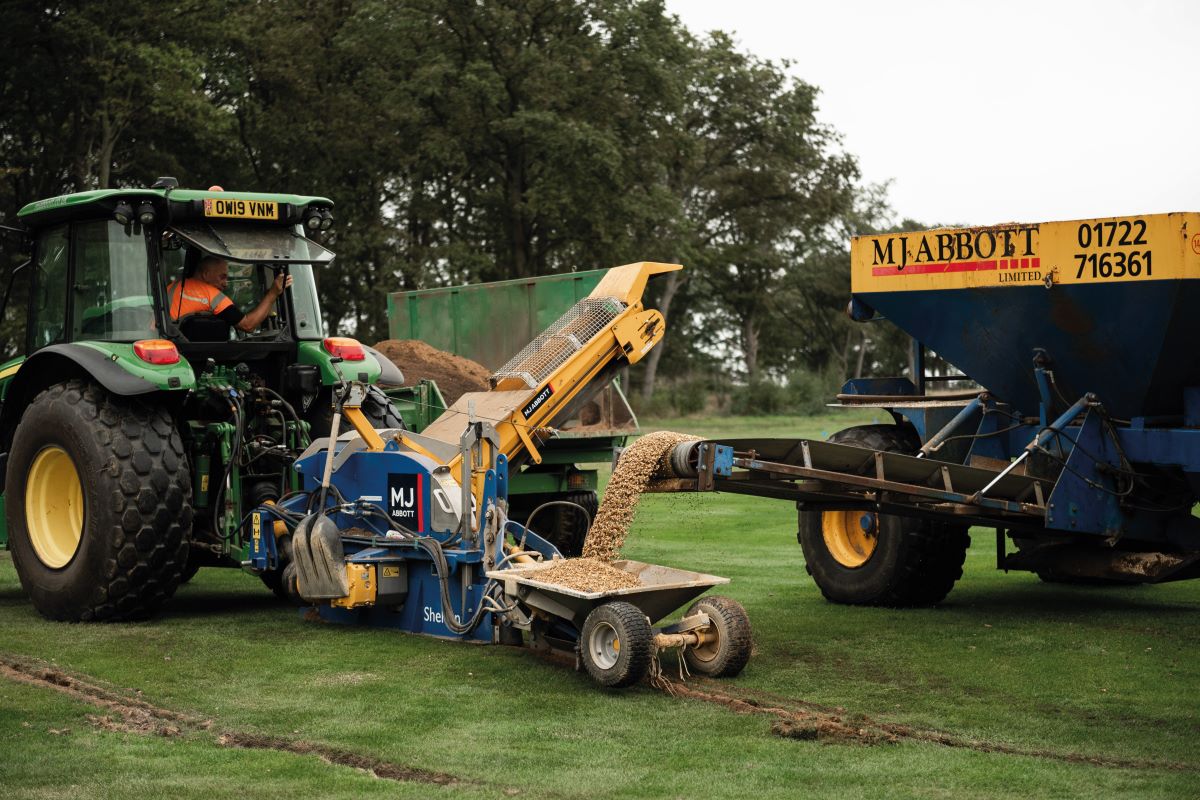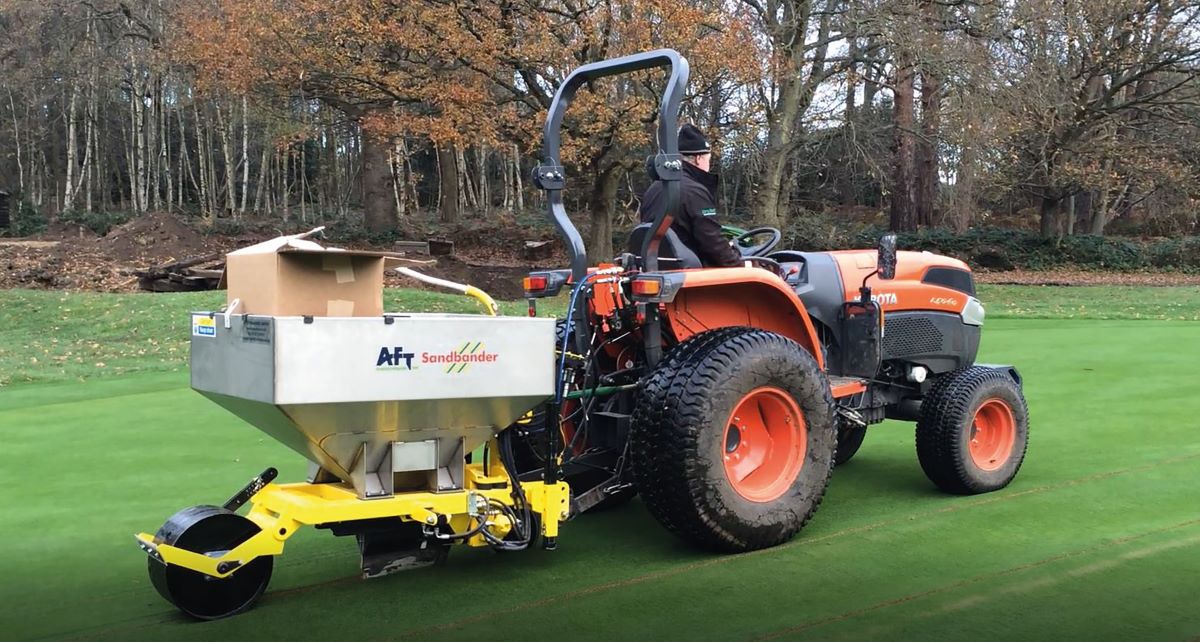- Homepage
- News and Features
- Planning and implementing drainage
Planning and implementing drainage
Surface water management is an increasingly common and crucial area for greenkeepers to concentrate on during the winter months, explains The R&A’s Gordon Howat.

Pugh Lewis Ltd found that the AFT 100 worked well at Royal Lytham & St Annes but reverted to the excavator for deeper digs
The autumn is now upon us, and as any hint of 2024 drought concerns are washed away by autumn rains, the focus naturally shifts towards drainage and the impact of water on the golf course. Indeed, the prominence of wet conditions and drainage has been one of the main themes for all clubs during the past 18 months. Excess surface water will eventually negatively impact turf health, and, as a result, the quality and performance of the golf course deteriorates. In turn, that impacts the greenkeeper’s ability to maintain and present a golf course to the standards strived for. There can be no doubt that surface water management is very important.
So, what can be done about this? Well, first it is correct to take a step back and fully consider what the end goal is and what obstacles are in the way. I’m a strong believer that you must understand where you want to get to before the journey to any destination can be plotted. Ask yourself this: are my drainage outlets suitable and functional? Would using a small but efficient system be enough to fix large areas that are flooded by focusing on just one water source, or do I need to consider a bigger plan? What soils exist and is the topography sympathetic or problematic to existing conditions or a new drainage scheme? Once these variables are understood, it is important to look at what type of drainage is required and the machinery that would be best suited to install any proposed investment.
The purpose of this piece is to understand the options and showcase some of the technologies available to help golf clubs better manage surface water.

Traditional piped drainage
We are all familiar with traditional piped drainage. A plastic perforated pipe is installed into the ground with a stone surround and cover, which is then overlaid with a sand or rootzone. These pipes will need to be suitably sized, and it is worth noting that if there is a situation where the fall (slope) is tight the use of smooth-bore twin-wall pipe is preferable. Typically, piped drainage is installed by means of a tractor-mounted chain trencher, a wizz wheel or a tracked excavator. Each have their own benefits and constraints, and some jobs may require a combination of machinery.
You can see that a tractor-mounted chain trencher is the best all-rounder and would be suitable in most conditions. The exception would be if a particularly large pipe is to be installed – say 225 mm or greater - or where soil quality is so poor an excavator with a bucket is the only option. A moderately sized trencher such as the AFT 45 requires only a 45-55 HP tractor making this a tool that clubs can use with their existing tractors. The larger AFT 100 requires a 100-145 HP tractor so is more of a contractor’s type of equipment.
Secondary drainage
Secondary drainage should be installed when the primary piped drainage system is insufficient. The installation of any form of slit drainage will speed up the movement of surface water into the primary piped drainage network below. The spacing of secondary drainage is often variable (sand banding and Koro slit centres differ as they are fixed by the equipment) but it is important to note that this light form of drainage cannot be relied upon to take water any great distance – so do not assume the spacing of the piped lateral drainage can necessarily be expanded if slits are to be installed. Secondary drainage should support a primary drainage system and not necessarily alter the design.
Secondary drainage comes in a few different forms, each with their own strengths and limitations. It is important to note that the lifetime of all drainage is limited, but this is especially the case with secondary drainage. However, good function can be managed by good maintenance – typically sand dressing and aeration.

Rope drainage
Passive Capillary Drainage (PCD) is perhaps more commonplace on greens particularly in the south of the UK. Often referred to as rope drainage, PCD is a stainless-steel core mesh wrapped in fibreglass, which draws water in through capillary action. It is typically laid at 1m spacings and is a good option for retro-fitting non-USGA greens because it is quick to install and involves limited surface disturbance. The only material used is sand, which is backfilled as part of a single process. There may be pros and cons for the club to consider when using non-traditional tried-and-tested methods of drainage.

Vertical drainage
This form of drainage is particularly useful where a positive outlet is not available. In simple terms, drilling kit is used to drill into fissures in the rock below to discharge water into the ground at potentially quite a significant depth. While it is not the quickest method to evacuate surface water, any storm water that the system cannot immediately cope with can be attenuated temporarily and then allowed to evacuate downwards at its own pace. It should be noted that a geotechnical report and trial drilling is necessary to determine whether ground conditions are suitable below and to ascertain peak flow and the requirements and extent that attenuation is necessary. While a little different from the norm, this is a solution that without doubt has a role to play when more traditional methodologies may not be suitable, but it is reliant on the geology below. GI
Water harvesting opportunities
It should be noted that, while surface water and drainage is undoubtedly a problem in turf management, with this comes opportunity. Water security and the demand for water for irrigation purposes in the summer months is increasing all the time. The R&A work with The Environment Partnership (TEP) to maximise the opportunity to harvest and re-use this resource in a holistic manner that gives golf courses improved climatic durability in both summer and winter. Tom Young at TEP can be contacted on [email protected] should there be an appetite within your club to look at the bigger picture.
Author

